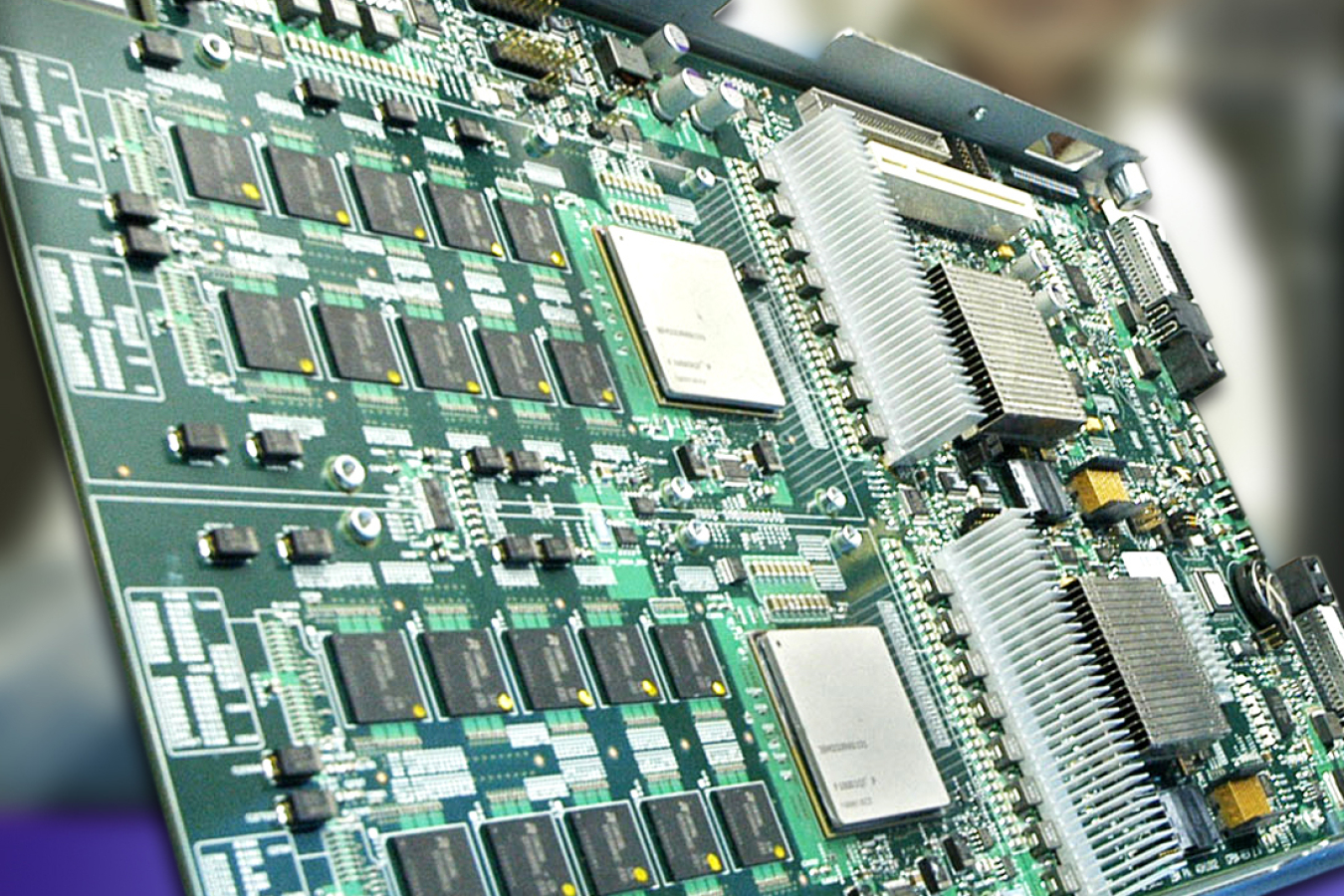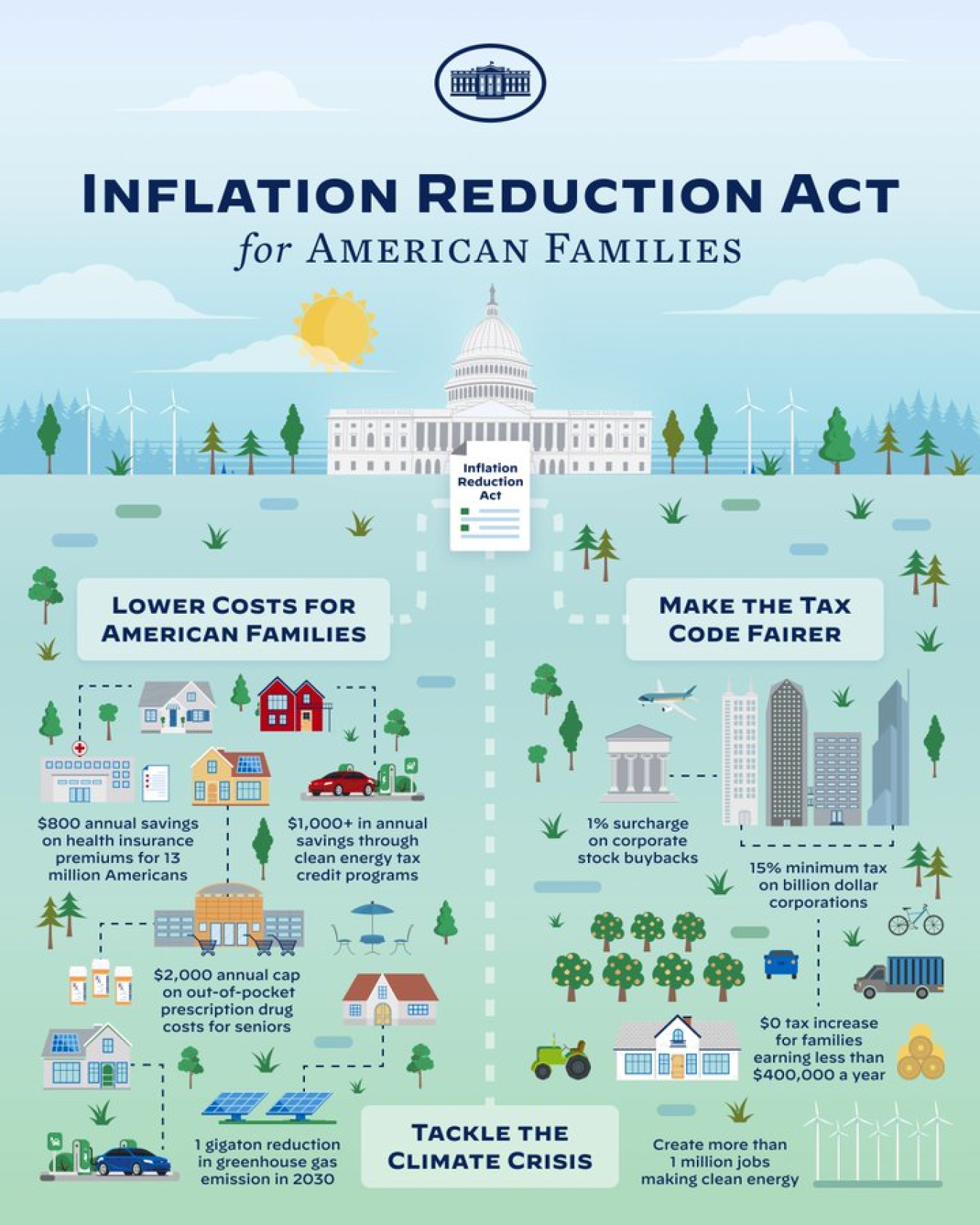Bipartisan Infrastructure Law
President Biden’s Bipartisan Infrastructure Law is the largest long-term investment in our infrastructure in nearly a century. The Bipartisan Infrastructure Law is a historic investment that lays a strong foundation for a clean energy economy. The Bipartisan Infrastructure Law invests $62 billion in the Department of Energy, standing up 60 entirely new programs and expanding funding for 12 existing ones.

- Public TransitRead more about Public Transit
The Bipartisan Infrastructure Law makes the largest investment in passenger rail since the creation of Amtrak – helping reduce greenhouse gas emissions by repairing, upgrading, and modernizing the nation’s transit infrastructure. The deal invests $66 billion to provide healthy, sustainable transportation options for millions of Americans by modernizing and expanding transit and rail networks across the country. It replaces thousands of transit vehicles, including buses, with clean, zero emission vehicles. And, it benefits communities of color. Asian American and African American workers commute by public transit at nearly 4 times the rate of white workers—and yet, they often don’t live near a convenient bus stop or train station. In addition, it will help transit workers who are disproportionally workers of color to protect their safety on the job.
Electric Vehicle InfrastructureRead more about Electric Vehicle InfrastructureThe Bipartisan Infrastructure Law invests $7.5 billion to build out the first-ever national network of EV chargers in the United States. This is a critical element in the Biden-Harris Administration’s plan to accelerate the adoption of EVs to address the climate crisis and support domestic manufacturing jobs. The BIL provides funding for deployment of EV chargers along highway corridors to facilitate long-distance travel and within communities to provide convenient charging where people live, work, and shop – and funding will have a particular focus on rural, disadvantaged, and hard-to-reach communities to help make EVs more accessible for every American.
Clean School BusesRead more about Clean School BusesMore than 25 million children and thousands of bus drivers ride yellow school buses—95% of which run on diesel, which creates dirty air pollution that’s linked to asthma and causes our kids to miss school, especially in communities of color. The Bipartisan Infrastructure Law delivers thousands of electric school buses nationwide, prioritizing rural and low-income communities, helping school districts buy clean, American-made, zero emission buses to protect our kids’ health.
Modern InfrastructureRead more about Modern InfrastructureThe Bipartisan Infrastructure Law invests $17 billion in port infrastructure and $25 billion in airports to address repair and maintenance backlogs, reduce congestion and emissions near ports and airports, and drive electrification and other low-carbon technologies. Modern, resilient, and sustainable port, airport, and freight infrastructure will support U.S. competitiveness by removing bottlenecks and expediting commerce and reduce the environmental impact on neighboring communities.
ResilienceRead more about ResilienceThe Bipartisan Infrastructure Law is the largest investment in the resilience of physical and natural systems in American history. Millions of Americans feel the effects of climate change each year when their roads wash out, airport power goes down, or schools get flooded. People of color are more likely to live in areas most vulnerable to flooding and other climate change-related weather events. The BIL makes our communities safer and our infrastructure more resilient to the impacts of climate change and cyber-attacks, with an investment of over $50 billion to protect against droughts, heat, and floods – in addition to a major investment in the weatherization of American homes.
Clean Drinking WaterRead more about Clean Drinking WaterThe Bipartisan Infrastructure Law expands access to clean drinking water to all American families, eliminates the nation’s lead service lines and helps to clean up the dangerous chemical PFAS (per- and polyfluoroalkyl). Currently, up to 10 million American households and 400,000 schools and child care centers lack access to safe drinking water. The Bipartisan Infrastructure Law invests $55 billion to expand access to clean drinking water for households, businesses, schools, and child care centers all across the country. From rural towns to struggling cities, the BIL invests in water infrastructure and eliminate lead service pipes, including in Tribal Nations and disadvantaged communities that need it most.
Tackling Legacy PollutionRead more about Tackling Legacy PollutionThe Bipartisan Infrastructure Law delivers the largest investment in tackling legacy pollution in American history by cleaning up Superfund and brownfield sites, reclaiming abandoned mines, and capping orphaned oil and gas wells. In thousands of rural and urban communities around the country, hundreds of thousands of former industrial and energy sites are now idle – sources of blight and pollution. Proximity to a Superfund site can lead to elevated levels of lead in children’s blood. Millions of Americans also live within a mile of the tens of thousands of abandoned mines and oil and gas wells – a large, continuing course of methane, a powerful greenhouse gas that is a major cause of climate change. The BIL invests $21 billion to clean up Superfund and brownfield sites, reclaim abandoned mine land, and cap orphaned oil and gas wells.
Clean Energy TransmissionRead more about Clean Energy TransmissionThe Bipartisan Infrastructure Law's more than $65 billion investment is the largest investment in clean energy transmission and the electric grid in American history. It upgrades our power infrastructure, including the building of thousands of miles of new, resilient transmission lines to facilitate the expansion of renewable energy. It creates a new Grid Deployment Authority, invests in research and development for advanced transmission and electricity distribution technologies, and promotes smart grid technologies that deliver flexibility and resilience. It also invests in demonstration projects and research hubs for next generation technologies like advanced nuclear reactors, carbon capture, and clean hydrogen. It provides $6 billion for a production credit for existing nuclear facilities to help prevent these zero-carbon energy sources from shuttering early.

CHIPS and Science Act
The CHIPS and Science Act invests in cutting-edge science and innovation to boost American competitiveness and bring jobs and supply chains home.
The CHIPS and Science Act will boost American production of semiconductors—which go into our cell phones, cars, computers, energy technologies, and more:
- $50 billion for American semiconductor research, development, manufacturing, and workforce development.
- A 25 percent investment tax credit for capital expenses for manufacturing of semiconductors and related equipment.
- These incentives will catalyze hundreds of billions more in private investment.
- In fact, as of early August, companies have already announced nearly $50 billion in additional private-sector investments in American semiconductor manufacturing.
- The bill authorizes $67 billion for the Department of Energy, including a $50 billion authorization for DOE’s Office of Science to enable cutting-edge research and development in clean energy and advanced computing and manufacturing.
- The legislation also authorizes investments in our National Lab infrastructure and establishes the Foundation for Energy Security and Innovation, which will help our Department deepen partnerships to create and deploy technologies of the future.
- CHIPS will catalyze regional economic growth and development by authorizing investing $10 billion in innovation and technology hubs across the country. These hubs will bring together state and local governments, universities, labor unions, businesses, and community organizations to spur manufacturing, create jobs, and position communities to lead industries of the future.
By increasing domestic supply of this critical technology, the CHIPS and Science Act will create tens of thousands of good-paying, union construction jobs and thousands more high-skilled manufacturing jobs.
- The CHIPS and Science Act requires recipients to invest in workers and communities, including opportunities for small businesses and disadvantaged communities.
- It requires Davis-Bacon prevailing wage rates for facilities built with CHIPS funding.
- The funds come with strong guardrails to make sure certain facilities aren’t built in China and other countries of concern and prevent companies from using taxpayer funds for stock buybacks and shareholder dividends.
The CHIPS and Science Act will strengthen the pipeline into STEM careers.
- The bill authorizes new investments in STEM education and training at all levels to support people of all backgrounds in science and technology careers.
- The legislation authorizes investments to expand the geographic and institutional diversity of research institutions and the students and researchers they serve, including new initiatives to support HBCUs and other minority-serving institutions.
- The legislation gives agencies and institutions more tools to combat sexual and gender-based harassment in the sciences, which has been a barrier to STEM participation for too many Americans.
Inflation Reduction Act
The Inflation Reduction Act (IRA) of 2022 makes the single largest investment in climate and energy in American history, enabling America to tackle the climate crisis, advancing environmental justice, securing America’s position as a world leader in domestic clean energy manufacturing, and putting the United States on a pathway to achieving the Biden Administration’s climate goals, including a net-zero economy by 2050.

- Investment Tax CreditsRead more about Investment Tax Credits
Investment Tax Credit (ITC) for renewable energy have helped drive deployment of wind farms and solar arrays in the United States, resulting in clean energy providing a majority of all electricity capacity additions in recent years. The Inflation Reduction Act modifies and extends the current PTC and ITC through 2023 and 2024.
Greenhouse Gas Reduction FundRead more about the Greenhouse Gas Reduction FundThe Environmental Protection Agency was issued $27 billion to award competitive grants to mobilize financing and leverage private capital for clean energy and climate projects that reduce greenhouse gas emissions, with an emphasis on projects that benefit low-income and disadvantaged communities.
Loan AuthorityRead more about Loan AuthorityThe Department of Energy's Loan Programs Office was provided $40 billion in loan authority supported by $3.6 billion in credit subsidy for loan guarantees under section 1703 of the Energy Policy Act for innovative clean energy technologies, including renewable energy systems, carbon capture, nuclear energy, and critical minerals processing, manufacturing, and recycling.

